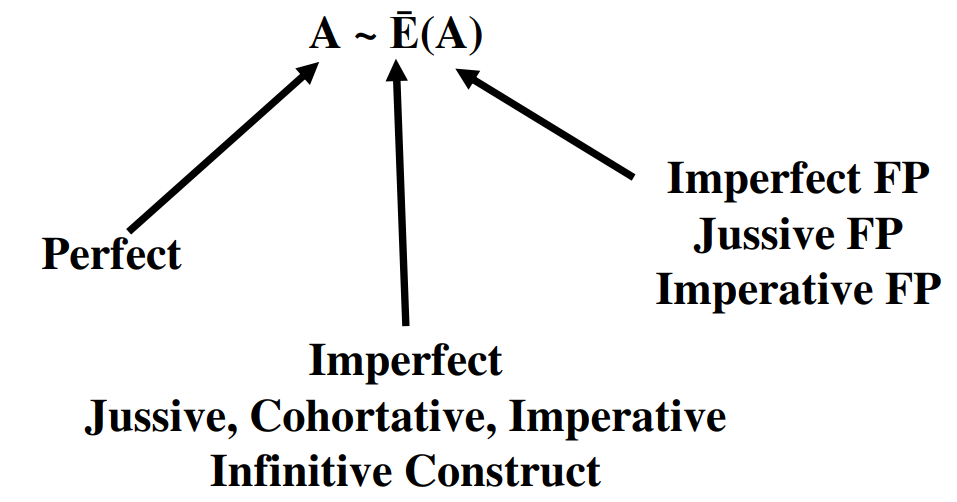Stem Vowel Pattern Nomenclature
The derived stems tend to be much more consistent with their application of stem vowels
- We will use the code we introduced at the end of Unit III to memorize the stem vowels for non-Qal Strong verbs - our thanks to Dr. Beckman for this innovation in Hebrew learning
- For example, the stem vowel code for Niphal is
\[V_{S} = A \sim \bar E (A)\]
- \(V_{S}\) means the Stem Vowel
- Everything to the LEFT of the tilde \(\sim\) is the stem vowel in the PERFECT conjugation
- Everything to the RIGHT of the tilde is the stem vowel in the IMPERFECT and related forms, Jussive, Cohortative, Imperative and Infinitive Construct
- The tilde itself is just a separator symbol with no inherent meaning
- Any exceptions are inside
[]for the perfect()for the imperfect- The Niphal has no exceptions for the perfect, but other stems change the stem vowel in the 1/2 person - this vowel will be listed inside
[] - Imperfect form exceptions listed inside
()apply to the Feminine Plural- Therefore \((A)\) in the formula means the Stem Vowel in the Imperfect FP, the Jussive FP, and the Imperative FP is Short A - Patach
- There are no Cohortative (1st person) feminine forms
- The Niphal has no exceptions for the perfect, but other stems change the stem vowel in the 1/2 person - this vowel will be listed inside
- What about Infinitive Absolute and Participles?
- It turns out that for stems besides the Qal the Infinitive Absolute like \(\bar E\) (Tsere)
- Participles, again other than Qal, tend to like the PERFECT \(V_S\), LENGTHENED if possible
- So for the Niphal Participle, since the Perfect \(V_S = A\), the Participle \(V_S = \bar A\) (Qamets)

After each stem, complete the applicable column on your Stem Comparison Worksheet